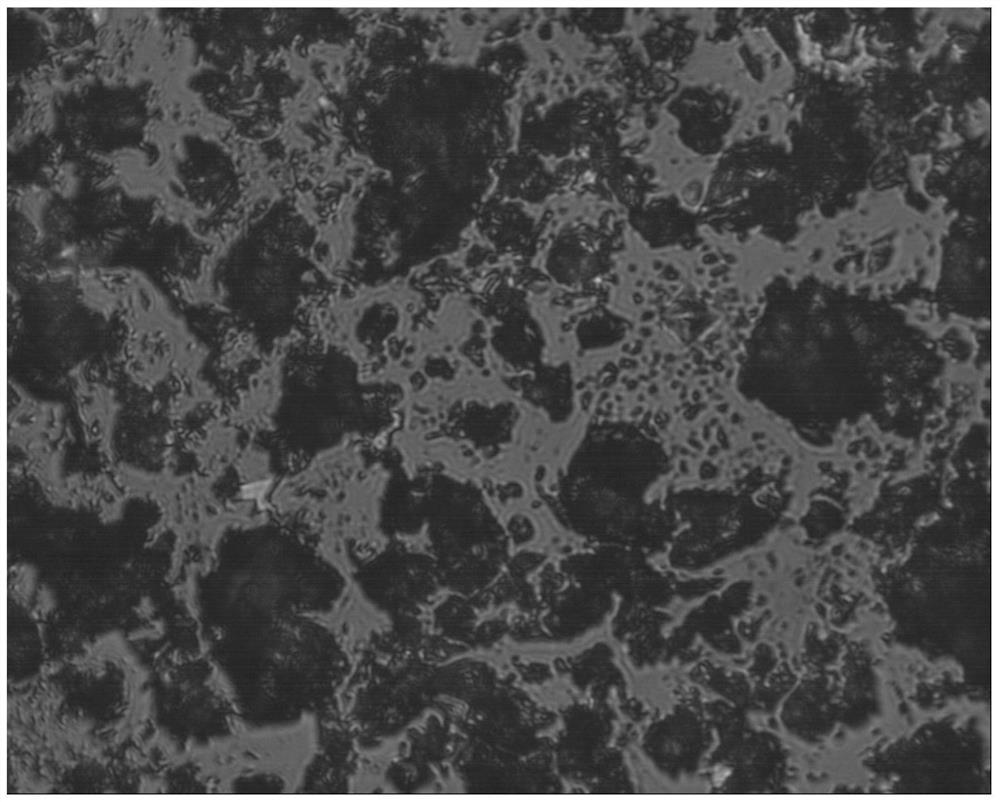High-density boron carbide ceramic material and pressureless sintering preparation method thereof
A boron carbide ceramic and boron carbide technology are applied in the field of high-density boron carbide ceramic materials and the preparation of pressureless sintering, which can solve the problems of inability to bond boron carbide and the like.
- Summary
- Abstract
- Description
- Claims
- Application Information
AI Technical Summary
Problems solved by technology
Method used
Image
Examples
Embodiment 1
[0024] This embodiment provides a method for preparing high-density boron carbide ceramics by pressureless sintering. The raw materials are weighed according to the mass percentage of the following conditions: boron carbide 86%, chromium disilicide 3%, silicon carbide 3%, aluminum 1%, polyimide Amine 7%, carbon black 1%;
[0025] Mix the above-mentioned materials except polyimide and put them into a planetary ball mill for ball milling for 40 hours; the ratio of solid to liquid is 1:1, the ratio of ball to material is 6:1, and the speed of the ball mill is 600r / min. After ball milling, polyimide is added to the material, mixed evenly, dried, sieved through a 50-mesh sieve, and placed in a blower drying box for low-temperature drying to obtain a fine powder of the mixture.
[0026] After the mixture powder is pressed and molded under a molding pressure of 200MPa, the plain embryo is made, and then the plain embryo is subjected to pressureless vacuum sintering. During the sinter...
Embodiment 2
[0030] This embodiment provides a method for preparing high-density boron carbide ceramics by pressureless sintering. The raw materials are weighed according to the mass percentage of the following conditions: boron carbide 84%, chromium disilicide 4%, silicon carbide 6%, aluminum 1.5%, polyimide Amine 3%, carbon black 1.5%;
[0031] Mix the above-mentioned materials except polyimide and put them into a planetary ball mill for ball milling for 25 hours; the ratio of solid to liquid is 1:2, the ratio of ball to material is 6:1, and the speed of the ball mill is 500r / min. After ball milling, polyimide is added to the material, mixed evenly, dried, sieved through a 70-mesh sieve, and placed in a blower drying box for low-temperature drying to obtain a fine powder of the mixture.
[0032] After the mixture is pressed and molded at a molding pressure of 190MPa, the plain embryo is obtained, and the plain embryo is subjected to pressureless vacuum sintering. During the sintering pro...
Embodiment 3
[0036] This embodiment provides a method for preparing high-density boron carbide ceramics by pressureless sintering. The raw materials are weighed according to the mass percentage of the following conditions: boron carbide 82%, chromium disilicide 5%, silicon carbide 7%, aluminum 0.5%, polyimide Amine 5%, carbon black 0.5%;
[0037] Mix the above-mentioned materials except polyimide and put them into a planetary ball mill for ball milling for 30 hours; the ratio of solid to liquid is 1:1, the ratio of ball to material is 3:1, and the speed of the ball mill is 500r / min. After ball milling, polyimide is added to the material, mixed evenly, dried, sieved through a 70-mesh sieve, and placed in a blower drying box for low-temperature drying to obtain a fine powder of the mixture.
[0038] After the mixture powder is pressed and molded with a molding pressure of 220MPa, the plain embryo is obtained, and then the plain embryo is subjected to pressureless vacuum sintering. During the s...
PUM
| Property | Measurement | Unit |
|---|---|---|
| Fracture toughness | aaaaa | aaaaa |
| Bending strength | aaaaa | aaaaa |
| Fracture toughness | aaaaa | aaaaa |
Abstract
Description
Claims
Application Information
 Login to View More
Login to View More - R&D
- Intellectual Property
- Life Sciences
- Materials
- Tech Scout
- Unparalleled Data Quality
- Higher Quality Content
- 60% Fewer Hallucinations
Browse by: Latest US Patents, China's latest patents, Technical Efficacy Thesaurus, Application Domain, Technology Topic, Popular Technical Reports.
© 2025 PatSnap. All rights reserved.Legal|Privacy policy|Modern Slavery Act Transparency Statement|Sitemap|About US| Contact US: help@patsnap.com



